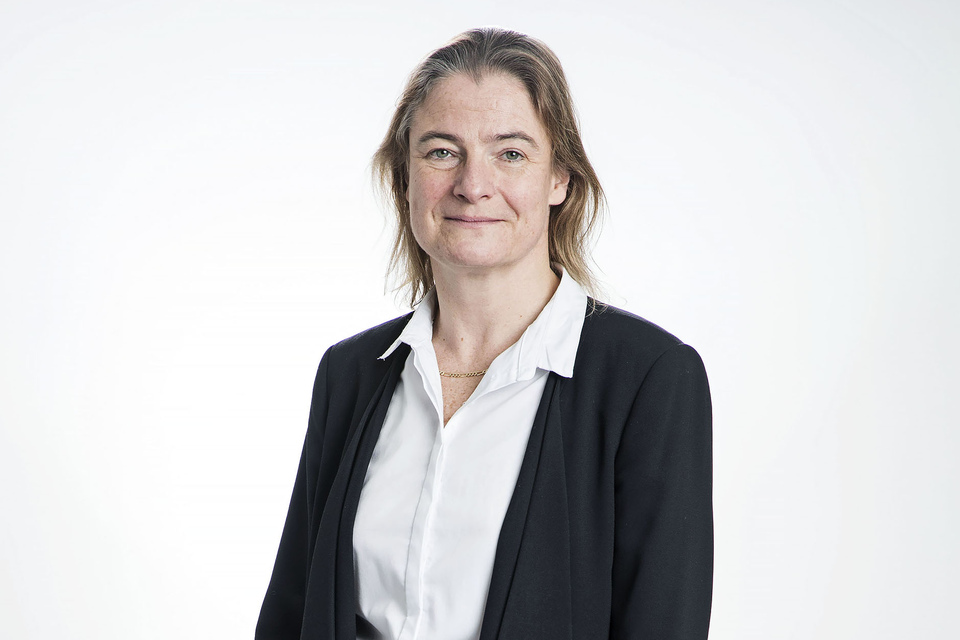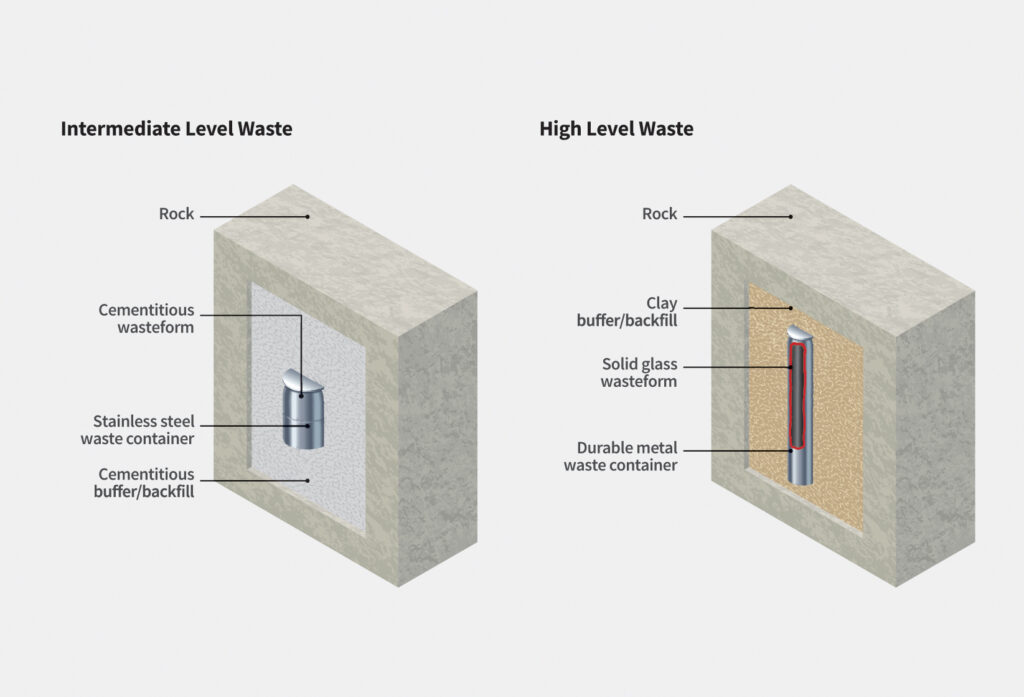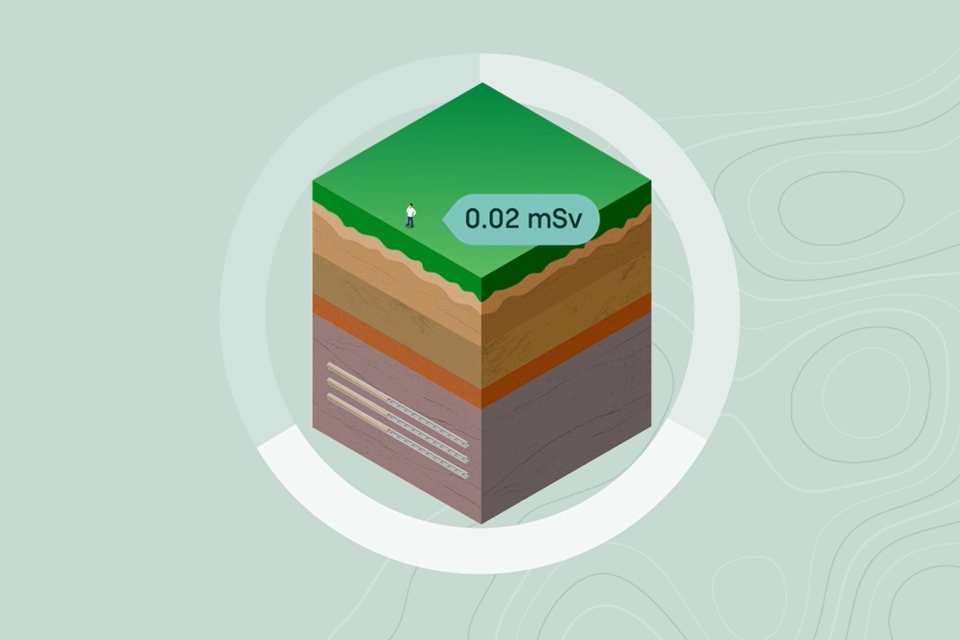Blog: Designing for long-term safety of the most hazardous radioactive waste
By Professor Lucy Bailey, Chief of Disposal Safety at Nuclear Waste Services

Why a GDF is the safest solution
The purpose of a Geological Disposal Facility (GDF) is to make the most hazardous radioactive waste permanently safe, sooner, removing the burden on future generations. Without it, for thousands of years, our descendants would have to carry the risk and pay for the costly enduring surface storage.
Geological disposal facilities use engineered barriers to work alongside the natural barrier of deep, stable rock hundreds of metres below the surface. This multi-barrier approach isolates and contains waste to prevent radiation from ever reaching the surface environment at levels that could do harm.
A GDF will be a passively safe facility, meaning that the facility will remain safe, for hundreds of thousands of years, without needing any human interaction, without the need for any inspections, any maintenance, or any repairs.
Multiple barrier approach
The geological barrier will provide the isolation, meaning it will keep the radioactivity away from people and the environment for very long timescales. Geological timeframes span millions of years and in the right geology, deep underground, we can be confident of a home for our wastes that will be stable for the long time needed.
The waste itself is processed, conditioned and packaged in solid form and put in suitable containers. These containers are placed underground in the tunnels and vaults within the GDF. The containers are surrounded with a buffer or backfill material (such as clay or cement) to protect the containers. The tunnels and vaults, and all GDF accessways are then backfilled and sealed to secure the GDF. We refer to these as our “engineered barriers” and they will be specifically designed for both the wastes and the geological environment.
This provides us with a multiple barrier system to isolate and contain the waste. We are not relying on any single barrier and even if something unexpected affects one barrier, the others will still contain the radioactivity long enough for it to decay to levels that won’t cause harm.

CASE STUDY: Cigar Lake – Canada
Cigar Lake is a naturally occurring uranium deposit in Canada. Cigar Lake is approximately 1.3 billion years old, the uranium ore lies about 450 metres below the surface and is enveloped within a clay rock formation.
Clay and rock have contained the uranium such that there are no significant levels of radioactivity detected at the surface above the Cigar Lake uranium ore body. Natural systems like this provide scientists with a long-term evidence base for the stability and safety of geological disposal.
Natural systems, like Cigar Lake, cannot fully replicate all the features of a Geological Disposal Facility, but they do provide insight and information on the long-term processes that isolate and contain radioactivity. These case studies can provide important evidence for the long-term safety concepts for geological disposal – proving that the right geology can provide the solution to disposing of radioactive waste.
Over timescales that long, there are many uncertainties. Working with Nuclear Waste Services (NWS) colleagues and international experts, it’s my job to identify relevant uncertainties, assess how they could affect the safety of a GDF, and work out how to address them in our design. This work is how we build our Safety Case. A GDF can only go ahead if we make a strong Safety Case; it’s how our independent regulators (including the ONR and the EA) will determine whether our design is safe.
Implications for the very long-term future
To understand what could potentially affect safety and when, we can look at the future evolution of a GDF as a series of different phases with different conditions.
In the years immediately after the GDF is closed and sealed, the high heat generating waste in the vaults will be at its hottest. There will be some short-lived changes in this period as the facility and its environment settle. So, we need to take this into account with the design of our containers and the GDF.
After the short-lived changes of those early years, we expect about a thousand years of stable conditions. And in the very distant future, over hundreds of thousands of years, glaciation or tectonic activity could significantly change the landscape. Our multi-barrier approach takes all of these scenarios and changes into account, ensuring long-term safety.

Using data and case studies to evidence safety
Our work to support the development of a safety case for the GDF involves assessing all available data and commissioning the investigations needed to gain understanding of all processes relevant to the safety of a GDF. A synthesis of all this information will be required to secure the necessary regulatory permissions to build a GDF and will be key in the development of a GDF design and safety case.
We also have to identify any future scenarios that could impact the safety and security of a GDF. We look to cover everything from worst credible case scenarios to what-if scenarios.
Long-term scenario planning
In any worst credible case scenario, we take an event or uncertainty and ask, what is the worst possible moment that this could occur or the worst way in which something could happen? For example, what if people inadvertently drilled into the GDF as soon as the site was no longer being managed, when the level of radioactivity inside was still high? Preventing this scenario is one reason we’re planning to build the GDF so deep underground.
And a what-if scenario is something that we really don’t expect to happen, but that we consider anyway, as a way to challenge the robustness of our design. For example, we don’t think any of our waste canisters would ever totally fail – but our Safety Case shows that if one did, and radioactive material escaped from its container, the other engineered barriers and the surrounding geology would still prevent that material from endangering anyone on the surface, maintaining the right level of safety.
In 1999, the Nuclear Energy Agency created an international database of all the Features, Events and Processes (FEPs) that had been identified and considered by radioactive waste disposal scientists across the world. Since then, the database has been updated many times, but no significant new FEPs have been identified – so we’re confident we’re considering all the right things.
What’s the right level of safety?
For a GDF, our independent regulators define safety in terms of the dose of radioactivity someone would experience on the surface, measured in milliSieverts.
Each year, on average, every one of us in the UK is exposed to a natural dose of about 2.7 milliSieverts, just from the natural background levels of radiation in our environment. The regulators will only judge a GDF to be safe if our Safety Case can show them that the additional dose on the surface would be 0.02 milliSieverts a year or less. That’s less than one percent of the natural background radiation level.

At the end of the day, if we can’t show that a GDF will be this safe or safer, it won’t happen. This means being confident in the safety ourselves, convincing our peer reviewers, including international peers, our community and other external stakeholders and ultimately satisfying the rigorous scrutiny of our regulators that a GDF is, and will always remain, safe.
Bio: Professor Lucy Bailey is also a member of the Canadian Safety Assessment Review Group and chaired the Nuclear Energy Agency’s Integration Group for the Safety Case from 2015 to 2022. She has participated in expert missions for the International Atomic Energy Authority and provided independent peer reviews of a number of other countries’ GDF safety cases.
